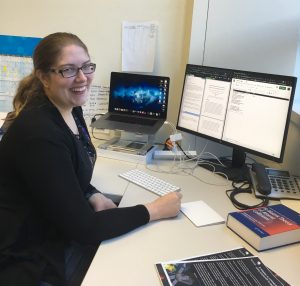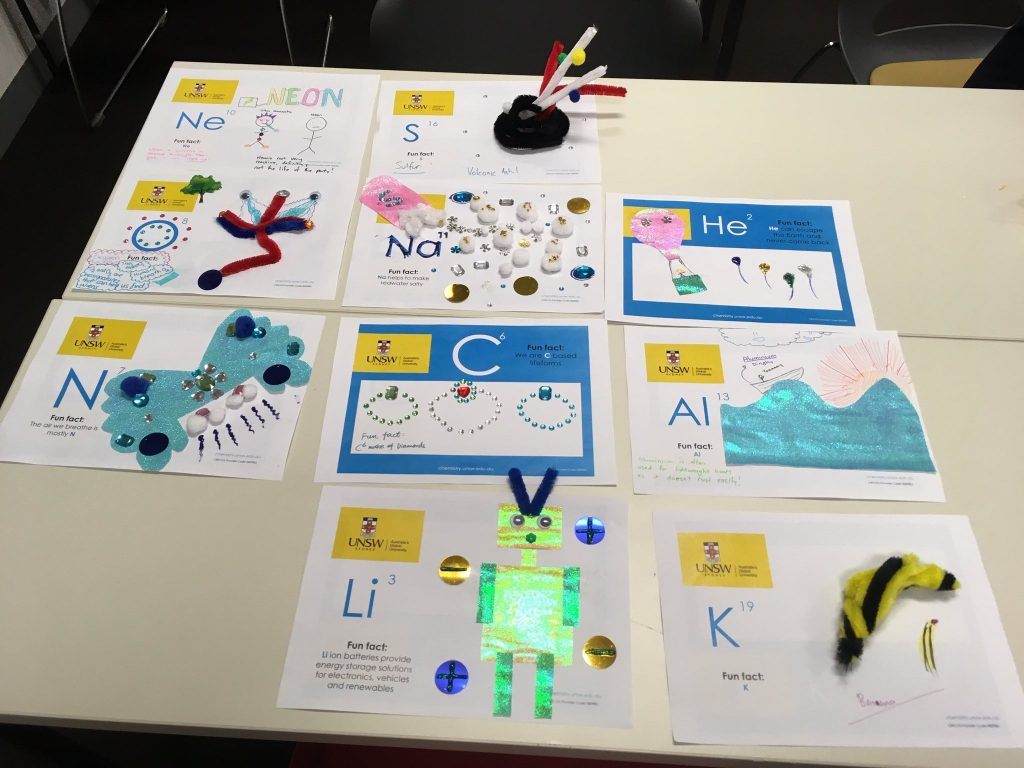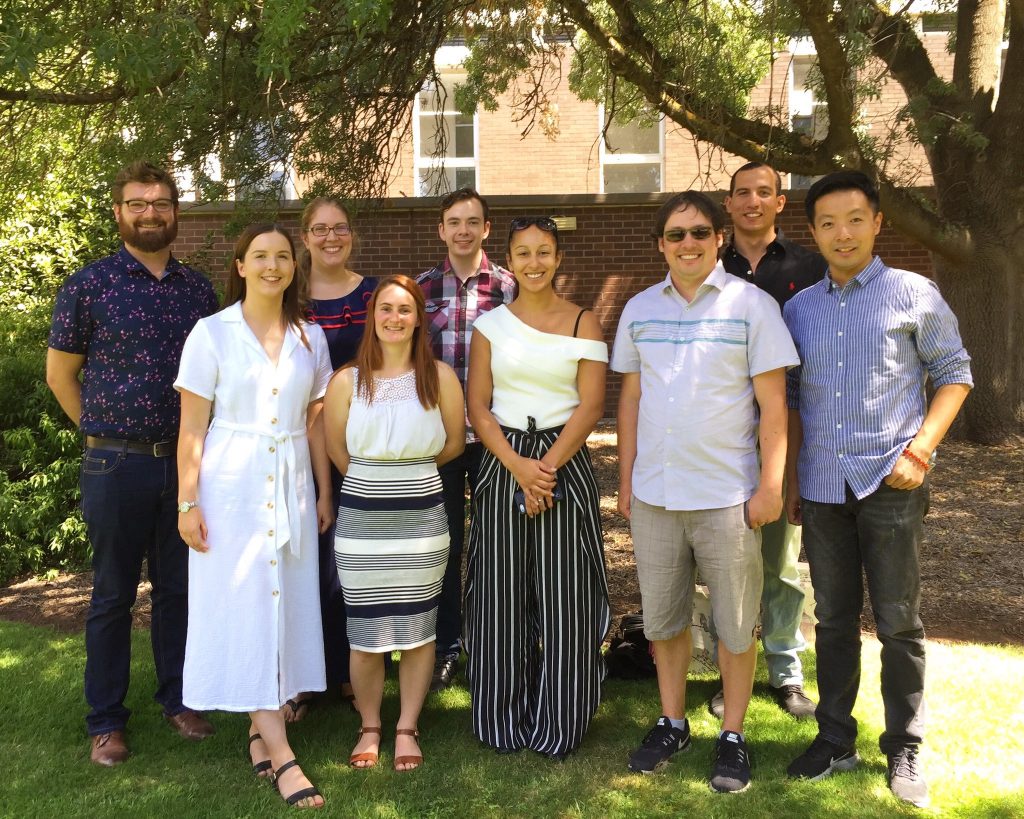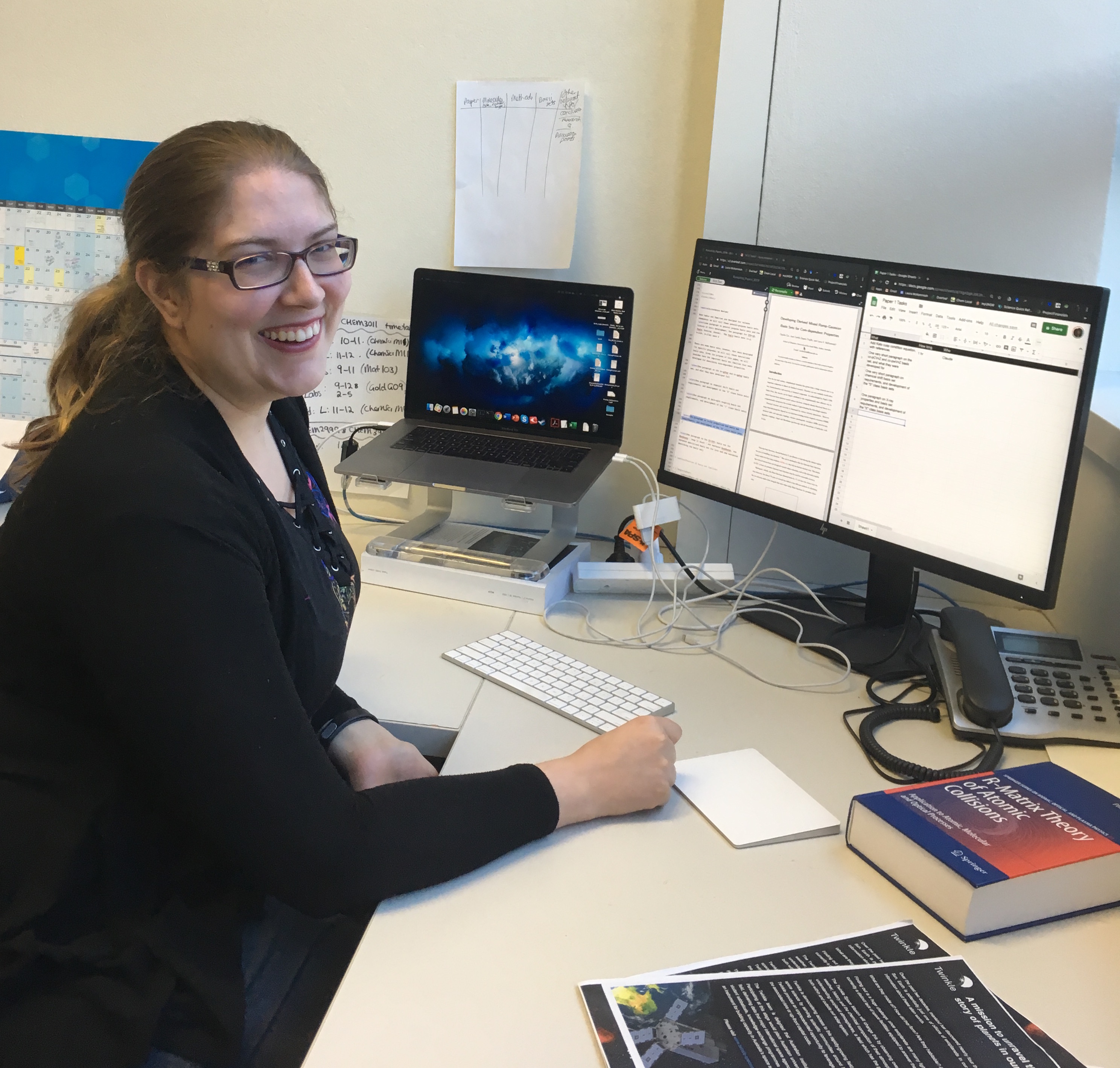By Dr Ruth Thomas

Dr Laura McKemmish is not just a chemist or a physicist – she’s both! Straddling the boundary of two scientific fields – Laura’s research uses computational methods and theory to tackle the complicated problems in chemistry and physics, looking at each from the unique perspective of the other field. When she is not researching, you can catch Laura scrapbooking, watching BattleStar Galactica or organising discussing science with the community in her role as outreach officer for UNSW Chemistry and as a UNSW Women Science Champion.
So, what is your role at UNSW?
I am a Lecturer in the School of Chemistry, with a so-called “40-40-20” appointment. This means I spend about 40% of my time on research, 40% on teaching and 20% on service, which for me is dominated by my role as Chair of the UNSW Chemistry Outreach Committee. I consider myself a quantum chemist and molecular physicist. My expertise is in theoretical and computational modelling of molecules, particularly their spectroscopy. I love interdisciplinary work and combining interesting methods with interesting applications.
How did you become a lecturer? Did you always want to work in science?
I think I was always destined to be a scientist, particularly in the fields of chemistry and physics. As a child, I loved reading books on spectroscopy, quantum mechanics, astronomy and fundamental theories of physics.
My journey began at University of Sydney, where I did a Bachelor of Advanced Science majoring in Physics, with Honours in Chemistry (Theoretical). During my degree, I did a large range of projects: from disproving a popular model of quantum consciousness to making a New Ionic liquid and taking a supersonic cooled spectra of 1,3,5-trifluorobenzene. I continued on to a PhD at the Australian National University in Chemistry, focusing on the development of new basis sets for quantum chemistry and graduated with my PhD on “Mixed Ramp-Gaussian Basis Sets” in May 2015.
After my PhD, I travelled to London and spent three years as a post-doctoral researcher at University College London’s Physics and Astronomy department. I worked on producing molecular spectroscopic data for studying hot Jupiter exoplanets and developed methods for theoretically treating ultra-cold atom-diatomic collisions. Last year I returned to Australia and have been working on building my own research team at UNSW.
What does your typical workday look like?
I usually start the day by putting together a to-do list and answering emails on the bus while on my way to work. Once at work, I try to get some writing done on papers about my recent research projects or grants to fund more of my research as well plan future research papers and grants. In between this, I have meetings with students and colleagues who I teach or do research with and spend some time fixing or writing code for ongoing research projects. I also give myself time to organise outreach activities with the department. Some days can be very hectic!

What are some of the worst stereotypes about you field?
There are not too many stereotypes in my field, as many people do not really know that my field even exists! The most common misconception though is that since I work in chemistry, I must work in a laboratory. In my research, we put molecules into computers and explore them there – not in the laboratory. I actually never go in the lab except to guide and teach my students when needed.
When you are not working, what do you like to do?
I scrapbook, sometimes knit, read fantasy and science fiction books, watch sci-fi tv series like Battlestar Galactica and play Magic the Gathering.
Why did you join the UNSW Science and Maths Women Champions?
I joined this awesome program with the sole intention of building an awesome network of awesome women in science and maths.

Follow Laura on Twitter






